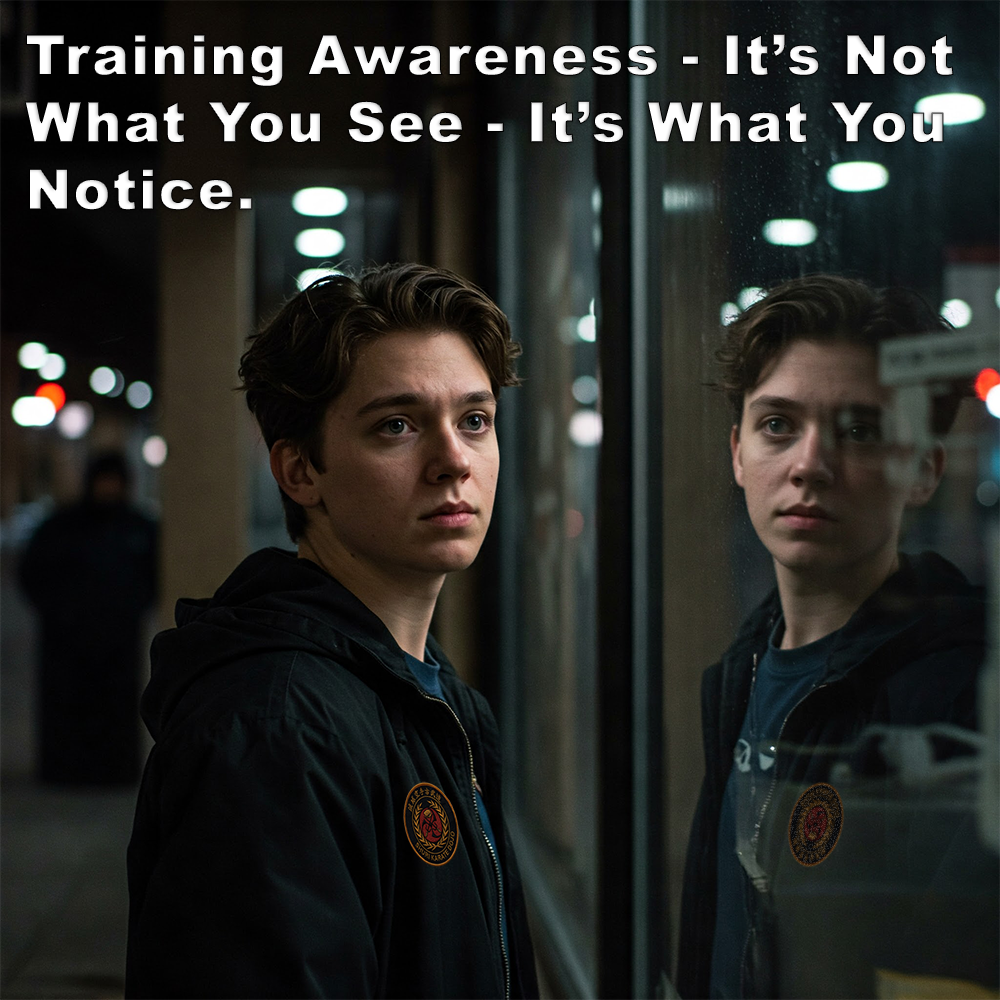
(Approx 2 minute 25 second read)
My recent article on awareness someone asked me, “But how do you train awareness?”
.
They expect a drill. A pattern. Something they can rehearse on the mats. But awareness isn’t a technique you run through a few times before bowing out. It’s not something you add on top of your training. It is your training. It’s a habit.
.
You train it by noticing. By observing people – not staring, but paying attention. Who’s close to you? Who’s watching? Who’s too interested?
.
As an example. I was teaching drills to my senior students, watching them intently as they ran through the movements. I could see in the eyes, in the body posturing of one of my students, they were going to ‘let rip’ on the other student. I noticed it before they even knew they were going to do it themselves, and stopped them.
.
Yes, that takes experience to see, but by practicing noticing the small things in and out of the dojo it builds this experience.
.
You train it by watching eyes, not just faces. Listening to tone, not just words. Watching the body, not just the hands.
.
You train it in the car, scanning mirrors and the road ahead – not just for traffic, but for the unexpected. Even when the light is green you’re checking that no one is about to jump the red.
.
You train it walking down the street, by noticing the rhythm of movement around you.
.
You train it at the shop, by spotting tension before it erupts.
.
You don’t wait for danger to practice awareness. You use everyday life as your dojo.
.
This isn’t about being paranoid. It’s not about jumping at shadows. It’s about being present. Switched on. Harder to catch off-guard.
.
Because real self-defense starts before the first move is made. And the best kind of fight is the one you saw coming – and avoided altogether.
.
So how do you train awareness? Every day. Everywhere. Eyes open. Ears open. Mind engaged. It’s not easy. But it’s necessary.
.
But it goes a little beyond just visual perception. It’s less about the eyes and more about the mind. I’m talking about awareness as a habit – something you train by deliberately paying attention to your surroundings, people, tone, body language, and the little details that most overlook.
.
It’s not so much about how you “look” at things, but how you notice them – how you observe, interpret, and stay switched on in everyday life. That kind of awareness can’t be reduced to just the mechanics of vision. It’s a broader mental discipline that helps you avoid danger before it starts.
.
And if that still feels vague to you – if you’re still waiting for a list or a drill – it might help to reflect on this: learning awareness isn’t just about doing, it’s about understanding. It’s not meant to be spoon-fed. You have to want to see. And that means thinking, questioning, and applying yourself beyond the dojo.
.
And for those of you that tell me self-defense isn’t necessary and a waste of time training for if you never have to use it, I would argue that what we’re truly training here goes beyond reacting to an attack. It’s about cultivating a constant state of self-protection, aiming to avoid the need for reactive “defense” altogether.
.
This awareness, practiced diligently in the everyday dojo of life, is a vital skill that helps us navigate potential dangers and safeguard ourselves in countless ways, often without a single physical technique being needed.
.
.
Written by Adam Carter
